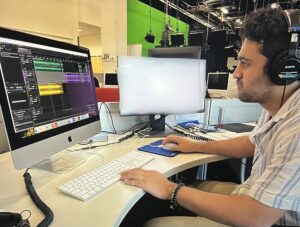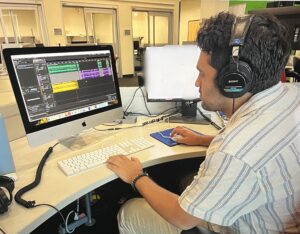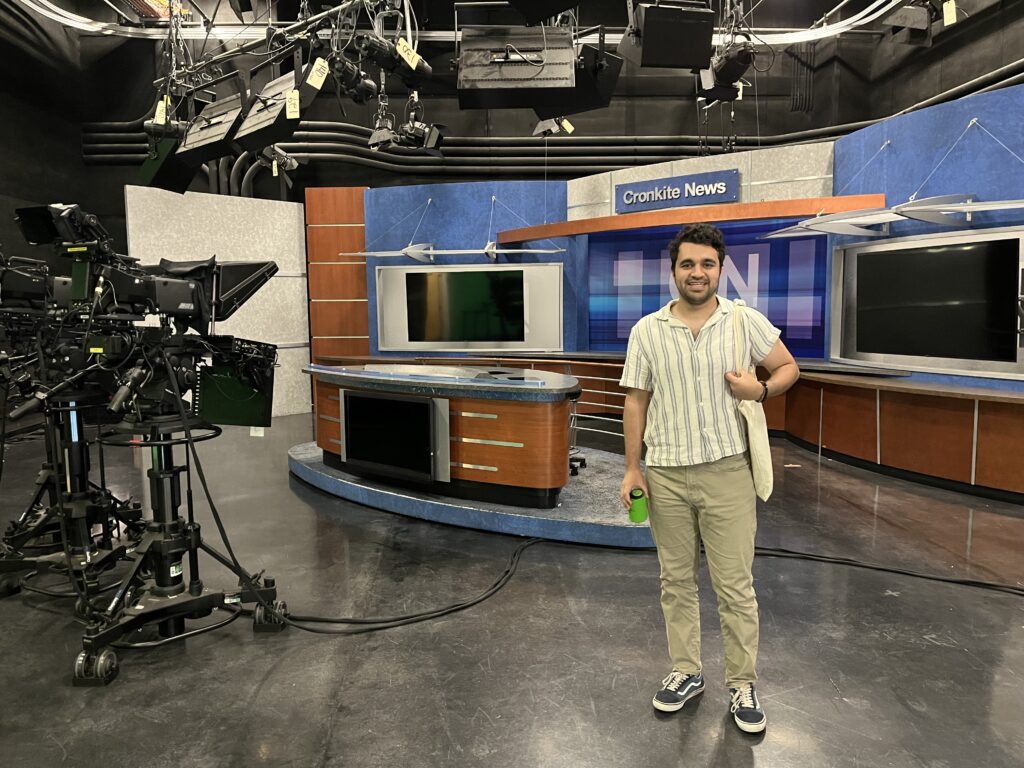Cut It Out: Editing My First Podcast Episode
Nick a -
Hey everyone, and welcome to another blog post!
I thought I would include a Full House reference in my title. I don’t know if it’s the most popular, but I liked watching it when I was younger. This past Friday, I got to meet my mentor in person for the first time. I traveled to ASU Cronkite and made sure to arrive early so I’d have time to find the right building. On a side note, one of the light rail stops was right near the entrance, and I really wanted to ride it for the first time—maybe one day I’ll get to!
Anyway, my mentor showed me the software we’d be using to edit the first episode: Adobe Audition.
I handed her a flash drive with the theme song I created, along with audio recordings from a few of my interviews. She explained that we needed to separate the different voices—mine and my guest’s—into two separate tracks. The theme song would be on another track.
At first, my mentor took the lead on editing and walked me through the key parts of the software. It was much more complicated than I expected! The main tools we used were the razor tool, which cuts audio, and the move tool, which rearranges clips and closes gaps in the recording. A fun fact I learned was that before digital video editing software, film editing involved physically cutting and splicing film reels together with a razor blade. The name “razor” was kept when digital video editing software was introduced. I can’t imagine how hard it must have been to make edits before the introduction of editing software. We also adjusted audio levels and faded the beginnings and endings of different segments.
One thing we relied on a lot—which I hadn’t expected—was background noise, also known as room tone. This is the subtle ambient sound recorded when no one is speaking, capturing the natural feel of the recording space. Placing room tone between transitions, like when one person stops speaking and another starts, made a huge difference in how smooth the audio sounded.
I was impressed by how quickly my mentor could pinpoint edits. From the sound of a cup hitting the table to the rhythm of someone’s breathing, she noticed every detail that could improve the overall quality.
While we made plenty of edits, my mentor emphasized that the goal wasn’t to make the recording perfect—it was to make it sound natural. Over-editing can make speech feel robotic, so we left in some small stumbles and speech mistakes instead of cutting out every single one.
After she walked me through the basics, I took over. By the time I had to leave, I had gotten the hang of it—and I was pretty proud of myself! My mentor listened to my edits, liked what I had done, and pointed out a few small mistakes I hadn’t noticed.
I also got some pictures of myself editing and visiting the studio where they record the Cronkite News segment. I’ve been told I’d be great on camera. By who, you ask? Well… I told myself, actually. But let’s ignore that for now.




While I didn’t include one in my last blog post, I will share a quote from a cartoon that applies to jobs and careers. “When life gets you down, do you know what you gotta do? Just keep swimming.” – Dory from Finding Nemo. I hope to release my first podcast episode soon, and I’ll see you in my next blog post!

Comments:
All viewpoints are welcome but profane, threatening, disrespectful, or harassing comments will not be tolerated and are subject to moderation up to, and including, full deletion.